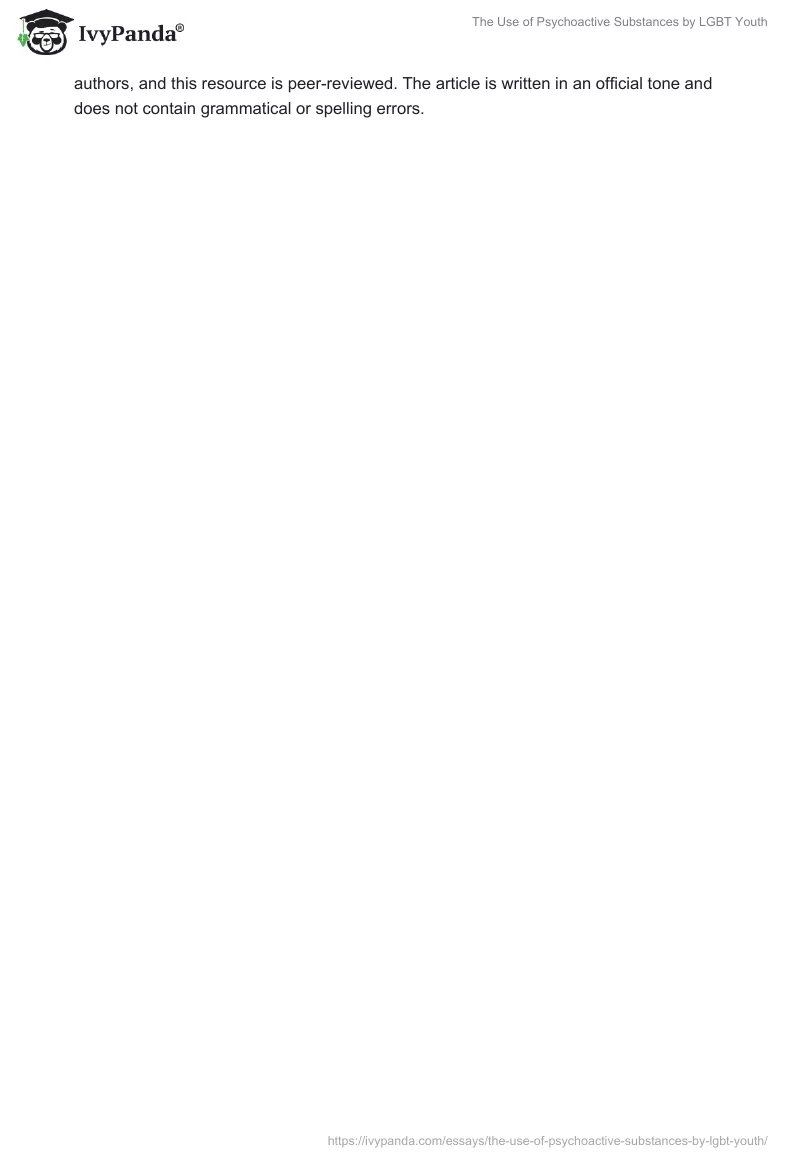Marshal, M., Friedman, M., Stall, R., King, K., Miles, J., Gold, M., Bukstein, O., and Morse, J. (2008). Sexual orientation and adolescent substance use: A meta-analysis and methodological review.Addiction, 103(4), 546–556. Web.
Michael Marshall et al. are researchers of the departments of psychiatry, psychology, and other departments studying youth. They conducted a study on the use of psychoactive substances by LGBT youth. The results showed that young members of the LGBT community are prone to using various types of psychoactive substances. The authors also concluded that young people are inclined to take multiple substances that affect the psyche due to the stress they are exposed to on a regular basis. Researchers believe that it is the status of a sexual minority that serves as a reason for using various types of narcotic drugs. That is, LGBT youth are much more susceptible to using different psychoactive substances than heterosexual youth. As a future study, Marshall et al. plan to study stress patterns in more detail in order to clarify which group of young people is more susceptible to victimization than others.
The purpose of this survey is to identify how reliable the information is that LGBT community adolescents are more likely to use psychoactive substances than heterosexual youth. The authors do not formulate clear intentions, but they are probably interested in the conclusions to draw attention to the problems of LGBT youth associated with the active use of narcotic substances. The information is factual and is based on various literature and research by other authors. The article contains information about the gender of the study participants, as well as their sexual preferences. The authors are the authoritative members of various institutes studying youth, psychology, and psychiatry, making this source reliable.
The information presented in the article correlates with my topic and indicates that the LGBT community is more susceptible to taking psychoactive substances than ordinary youth. The data is given for people with a high level of education. This source is not new, what makes it less relevant today, and the authors did not provide updated information. The information in the source is confirmed by third-party research by other authors, and this resource is peer-reviewed. The article is written in an official tone and does not contain grammatical or spelling errors.


